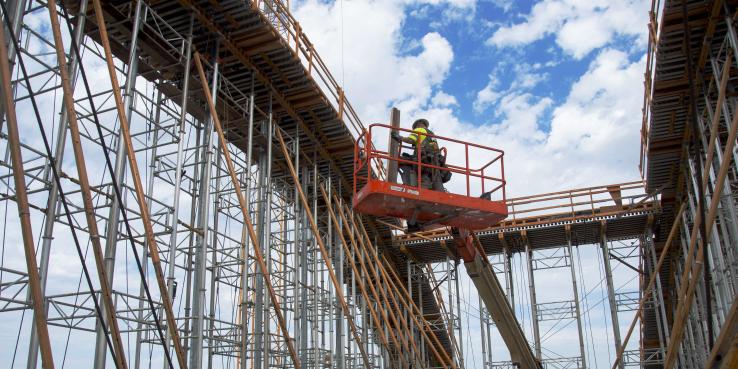This editorial first appeared in the San Francisco Chronicle.
California is long overdue for a world-class transportation system that can support a growing economy, help expand economic opportunity to long-underserved areas of the state and support our ambitious carbon reduction priorities. The high-speed rail network currently under construction in the Central Valley can deliver on those bold objectives, but we must remain committed to fully funding its completion.
Today, thousands of workers at more than 30 construction sites are making great progress on the 171-mile initial operating segment that will connect Merced and Bakersfield and provide service to an area with some of the fastest growing cities and counties in the country. Important early investments are also being made in Los Angeles and the Bay Area to fund critical improvements and upgrades to existing rail mass transit systems like Caltrain that will eventually support the arrival of high-speed trains.
The benefits to California of building a modern high-speed rail will be immense. For too long, a lack of strong transportation connections has separated our coastal metropolitan regions from our rural communities in the Central Valley. This has created a two-tier state that diminishes opportunity and quality of life for millions of Californians.
High-speed rail can play a significant role in eliminating the barriers that have created an uneven playing field across California.
Already, skyrocketing housing costs along the coast are forcing growing numbers of workers — many of whom fill important middle-wage jobs — to commute longer and longer distances from regions like the Bay Area to Central Valley cities. Not only is this reducing economic productivity, it’s imposing steep transportation costs on the workers and families least able to afford it and hurting their quality of life. Long, polluting commutes by car undermine California’s ability to reach its carbon reduction goals, which are heavily tied to getting people out of automobiles. High-speed rail will provide a clean, electrified travel option through communities with some of the worst air quality in the country and who pay for it in poor health, often for life.
High-speed rail combined with strong connections to local and regional transit systems can help alleviate these problems. It will also take pressure off our constrained airports as our population grows and provide a speedy alternative — traveling between Los Angeles and the Bay Area in less than three hours.
Let’s build out high-speed rail in the Central Valley, and let’s not stop there. High-speed rail has attracted significant funding since voters approved Proposition 1A in 2008, yet will require much more to build out the entire system. The state will need to commit more resources to make that happen, and all innovative financing options should be explored. The vision to build out a 500-mile rail system to grow the state’s economy, avoid a climate catastrophe and reconnect California’s cities is an ambitious one.
Let’s see how far and how fast we can really go.
